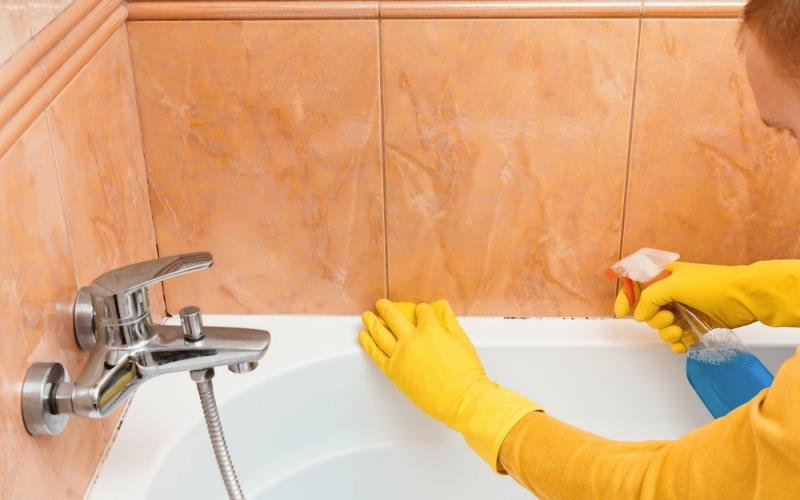Bathroom mold is more than just an unsightly blemish; it can pose health risks and lead to structural damage if left unchecked. Understanding how to prevent and repair mold problems is crucial for maintaining a clean, healthy, and safe bathroom environment.
Here, we explore effective strategies to keep mold at bay and ensure your bathroom remains a fresh and welcoming space.
Understanding Bathroom Mold
Mold thrives in damp, humid environments, making bathrooms the perfect breeding ground. It often appears as black, green, or brown spots and can develop on walls, ceilings, and grout lines. Mold not only looks unpleasant but can also cause respiratory issues and allergic reactions. Therefore, taking steps to prevent and eliminate mold is vital.
Effective Prevention Strategies
1. Maintain Proper Ventilation
One of the most effective ways to prevent bathroom mold is by ensuring adequate ventilation. Mold thrives in stagnant, moist air, so improving air circulation is essential. Use exhaust fans during and after showers to expel moisture-laden air outside. If your bathroom lacks an exhaust fan, consider installing one or simply leave the door or window open to allow fresh air in.
2. Use Mold-Resistant Materials
When renovating or redecorating your bathroom, opt for mold-resistant materials. Mold-resistant drywall, paint, and caulk are specifically designed to deter mold growth. These materials contain antimicrobial agents that inhibit mold development, providing an extra layer of protection against moisture-related problems.
3. Regular Cleaning Routine
Establishing a regular cleaning routine is crucial in preventing mold. Clean bathroom surfaces with mold-killing solutions, focusing on areas prone to moisture accumulation, such as shower curtains, tiles, and grout lines. A mixture of vinegar and water can effectively clean and disinfect surfaces, keeping mold at bay.
4. Address Leaks Promptly
Leaky faucets, pipes, or showerheads contribute to moisture buildup, creating ideal conditions for mold. Regularly inspect plumbing fixtures and promptly address any leaks to prevent water accumulation. Sometimes, professional help may be necessary to tackle persistent leaks or hidden plumbing issues.
Repair Strategies for Existing Mold
1. Identify the Source
Before tackling mold removal, identify the source of moisture causing the problem. This could be due to poor ventilation, leaks, or high humidity levels. Addressing the root cause is crucial to prevent mold from returning after removal.
2. DIY Mold Removal
For small mold infestations, DIY removal can be effective. Use a mixture of detergent and water or a commercial mold remover to scrub affected areas. Ensure you wear protective gear, such as gloves and a mask, to avoid inhaling mold spores. After cleaning, thoroughly dry the area to prevent mold from regrowing.
3. Seek Professional Help
For extensive mold infestations, professional remediation may be necessary. Mold can penetrate porous surfaces, making it challenging to remove completely. Professionals have the expertise and tools required to address severe mold problems and ensure your bathroom is mold-free.
The Role of Professional Assistance
While DIY methods can be effective for minor mold issues, professional assistance is often needed for comprehensive solutions. Engaging a plumber in Layton, for example, can be invaluable if your bathroom mold problem stems from persistent leaks or faulty plumbing. A professional plumber can conduct a thorough inspection, repair leaks, and provide guidance on preventing future mold growth.
Maintaining a Mold-Free Bathroom
Consistently applying these prevention and repair strategies can help maintain a mold-free bathroom. Regularly assess your bathroom’s ventilation, promptly address leaks, and establish a cleaning routine to keep surfaces dry and clean. By taking these proactive steps, you can enjoy a healthier, more pleasant bathroom environment.
In conclusion, saying goodbye to bathroom mold requires a combination of preventive measures and timely repairs. By maintaining good ventilation, using mold-resistant materials, implementing regular cleaning routines, and addressing leaks promptly, you can keep your bathroom mold-free.
For more complex issues, don’t hesitate to seek professional help to ensure a comprehensive solution. With these strategies in place, you can enjoy a cleaner, healthier bathroom and wave goodbye to mold for good.

